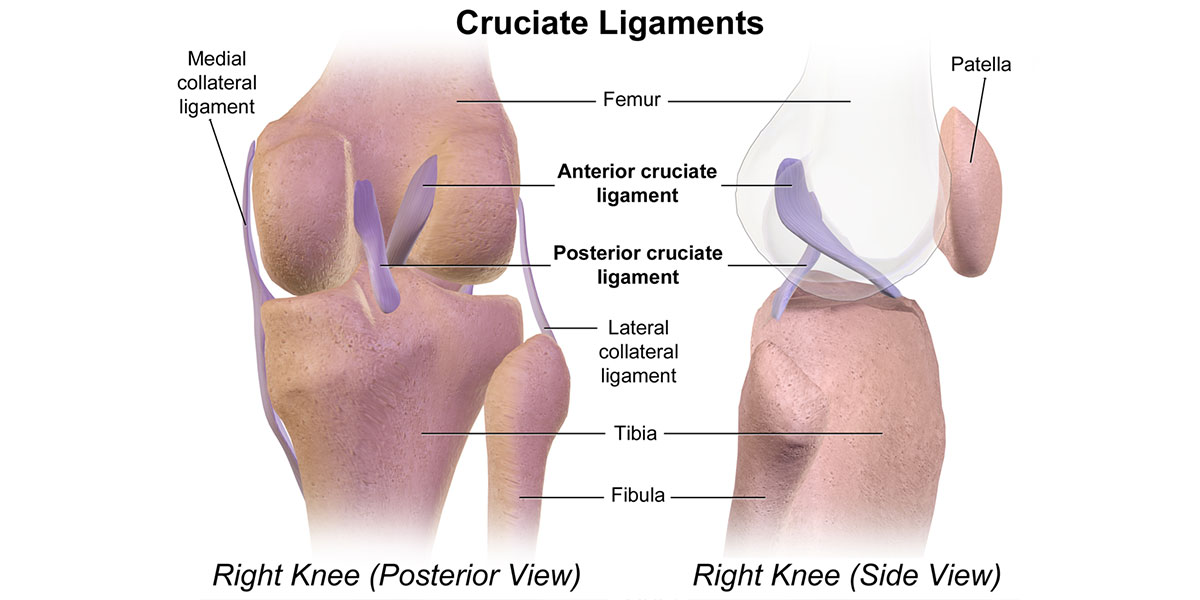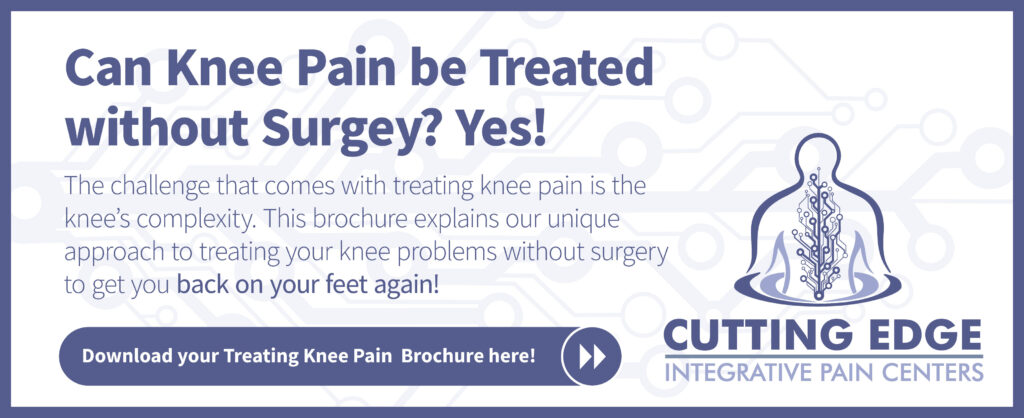Whether we’re walking or just sitting in a chair, we use our knees more often than we think. The knee is known as a hinge joint which means it is only meant to move in a single direction. This characteristic makes it highly vulnerable to injury. Blows from the sides or front, twists, or movements in the wrong direction can cause stretching or tearing of the knee ligaments. There are six types of ligaments in the knee and understanding the anatomy can help you prevent common knee injuries.
Is qEEG Right for You? Click Here to Learn More
A ligament is a fibrous connective tissue that attaches bones and joints with one another. The ligament’s job is to stabilize the joint. When a ligament is injured, it can be extremely painful and may require medical attention. The knee has six main ligaments:
- Anterior Cruciate Ligament (ACL)
- The ACL is located in the center of the knee toward the front. This ligament is responsible for forward motion and allows your tibia to rotate as you move. An ACL injury is common with sudden twists.
- Posterior Cruciate Ligament (PCL)
- The PCL is located in the center of the knee as well but is connected to the back of the tibia. The PCL allows for backward movement and can be torn with forceful frontal blows to the knee.
- Medial Collateral Ligament (MCL)
- The MCL is located in the inner side of the knee. The job of the MCL is to stabilize the joint with movement. Similar to the PCL, the MCL can be injured with sudden blows to the side of the knee.
- Lateral Collateral Ligament (LCL)
- This ligament is located on the outer side of the knee. Injuries to the LCL are less common but can occur with MCL injuries depending on the strength of the impact.
- Fibular Collateral Ligament (FCL)
- As one of the larger ligaments of the knee, the fibular collateral ligament is located on the outer side of the knee attaching to both the femur and fibula. This ligament works with the others to control hinging and straightening of the knee joint. An FCL is commonly injured due to a blow to the inside of the knee.
- Coronary Ligaments
- The coronary ligaments are very tiny and fragile connective tissues in the knee. These ligaments control both the inward and outward movements of the knee ensuring that all the tissues do not damage one another. These ligaments are susceptible to injury due to their small size and can be injured with overexertion. If injured, coronary ligaments can result in pain, reduced range of motion, and knee instability.

Different views of the cruciate ligaments in the knee.
Treating Knee Ligament Injuries
Knee injuries are not only painful but when surgery is required can be expensive and require a number of months to heal. There are other options that exist for treatment. At Cutting Edge Pain, we strive to provide the pain relief practices that will allow you to get back to living your life pain-free. We offer numerous minimally invasive treatment options such as platelet-rich plasma, stem cell therapy, prolotherapy, and non-invasive laser therapy.
Knee injuries are extremely common and being aware of your body and knee movements is the first step in avoiding injury. Your joints are made to allow for movement but only in certain directions. If you do become injured, be sure to seek medical attention as soon as possible. Our team at Cutting Edge Pain is prepared to recommend the best treatment options for you.


